Results 6,361 to 6,370 of 12096
Thread: Anandtech News
-
10-05-16, 10:46 PM #6361
Anandtech: AMD Releases Radeon Software Crimson Edition 16.10.1 Hotfix - Support for
As the new games continue to roll in I’m sure the driver developers are hard at work keeping up with all the big release. With AMD Radeon Software Crimson Edition 16.10.1 bringing us driver version 16.40.2715 we have a solid handful of CrossFire fixes with a few others following along, and support for two more titles being released across the next week.
Starting us off we have some game related fixes all centered around CrossFire. Both Battlefield 1 and Overwatch received fixes for issues with flickering graphics that were seen while running the game with CrossFire enabled, and Paragon shared in the flickering issue when FreeSync was used in conjunction with CrossFire. Deus Ex: Mankind also has received a fix for issues with stuttering while using CrossFire. Moving away from Crossfire we have a fix for random or sudden FPS drops while playing The Crew, and the Pixel Format option is no longer missing for some Radeon RX 400 series products in Radeon Setting.
Shifting gears (or should I say cogs) to the motivator for this release we have preparations for the release of two games in the next week. The open world action game Mafia III will arrive October 7th, or Friday. Next Tuesday the 11th we’ll see Gears of War 4 released. (ed: I guess ten years isn’t long enough to remove a locust infestation) Alongside the game optimizations we are also given a CrossFire Profile for Shadow Warrior 2.
As always, those interested in reading more or installing the updated hotfix drivers for AMD’s desktop, mobile, and integrated GPUs can find them either under the driver update section in Radeon Settings or on AMDs Radeon Software Crimson Edition download page.
More...
-
10-06-16, 08:56 AM #6362
Anandtech: Reminder: OCZ Ask The Experts & SSD Giveaway
As a quick reminder to anyone who has yet to enter, our OCZ SSD giveaway is still open on our forums. We'll be giving away 3 SSDs altogether: 512GB and 1TB versions of the recently launched OCZ VX500 SATA SSD, and a 512GB OCZ RD400 NVMe M.2 SSD. So if you like free stuff and are in the United States, don't hesitate to enter.
Meanwhile our Ask The Experts session with OCZ is kicking off an hour from now. Among the OCZers answering questions will be OCZ's Director of Product Management, Alessandro Gilligan, and VP Alex Mei. It's not too late to submit questions, otherwise you can see what OCZ has to say in response starting at 10am ET.
More...
-
10-06-16, 08:56 AM #6363
Anandtech: The Logitech G910 Orion Spectrum Mechanical Keyboard Review
Logitech is perhaps the most reputable manufacturer of peripherals on the planet, with a myriad of products for PCs, mobile devices and consoles. In today's review we are having a look at their new flagship gaming keyboard, the G910 Orion Spectrum, featuring Logitech’s Romer-G mechanical switches, RGB lighting and the unique ARX Dock.
More...
-
10-06-16, 06:00 PM #6364
Anandtech: Oculus Touch Controllers Shipping In December for $199
Back when the Oculus Rift and HTC Vive VR headsets launched earlier this year, one of the main differentiating features was the inclusion of touch/motion controllers. The Rift was launched with a focus on seated gaming, while Valve & HTC opted to focus on motion control and room scale gaming. As a result while the headsets were quite similar, their pack-in hardware was different; the Rift shipped with an Xbox One controller, while the Vive shipped with its two motion controllers and supporting Lighthouse sensor hardware. This also led to a notable difference in price, with the Rift launching at $599 while the Vive launched at $799, essentially putting a $200 price tag on motion controls.
However even before the Rift launched, Oculus already had plans in the works for their own motion controls. Dubbed the Oculus Touch, the handheld sensors and supporting hardware wouldn’t be ready for the launch, but instead would be launching as an add-on to the Rift later this year. Now at Oculus’s latest Connect event, we finally have the full details on the Oculus Touch launch, and how the system will work.
The Oculus Touch controllers will be hitting the market right before Christmas, shipping in volume on December 6th, while preorders are starting on Monday, October 10th. The Touch kit, which includes the two controllers, two pack-in games – VR Sports Challenge and The Unspoken – and one extra camera (or as Oculus calls it, the constellation sensor) will sell for $199. Given that this has long been the assumed price of the Oculus Touch kit, there shouldn’t be any surprises here.
With that said, Rift owners looking to do room scale gaming will want to pay attention to the technical details here, as they matter quite a bit. As Oculus notes, even though the second camera improves the system’s ability to track the headset and controllers, unlike the Vive’s Lighthouse system, two cameras won’t be enough for room scale. The experience you get out of the box with the Oculus Touch system will depend on how you position the cameras – there are multiple options available – but even in a diagonal setup for 360 degree tracking, the play area won’t be large enough to be room scale as defined by the Vive. Instead, for true room scale gaming a 3rd camera is required, which Oculus will sell separately for $79, bringing the price of a complete headset and room scale kit up to $879.
Given what’s known about Oculus’s constellation system, that they can’t pull off room scale with only two cameras isn’t too surprising; the cameras just don’t have the right combination of FOV and range to do it with two. To that end, launching the Touch with only one extra camera seems to be a calculated risk, with Oculus betting that most users are primarily after motion controls will be fine with gaming on a smaller scale – on the order of a few feet by a few feet – as we experienced first-hand with the prototype Touch hardware back in March. Otherwise true room scale can be done thanks to the third camera, albeit at an additional price.
Finally, along with today’s launch reveal, Oculus has also confirmed that 35 games will be Touch-enabled in time for the hardware’s launch in December. On a personal note, I’m interested in seeing what the end-user feedback is on the Touch controllers. Oculus has gone in a very different direction than HTC/Valve on the form factor of the controllers – using what amounts to two halves of a gamepad instead of two wands – so I’m curious to see how that compares to the wands over long-term use. The Vive system essentially senses the end of the wand, whereas the Oculus system needs to sense the markers wrapped around the hands, so it’s a small but potentially important difference in how user interaction will work and feel.
More...
-
10-07-16, 03:00 AM #6365
Anandtech: NVIDIA Releases 373.06 WHQL Game Ready Driver - Support for Mafia III, GoW
Not to miss out on the many releases this fall NVIDIA is working hard to keep our computers ready for the newest and upcoming games. In another iteration of release 370, driver version 373.06 gives us a short list of fixes and game ready support for all of the biggest releases in the next week.
This time around we have a rather short list of fixes. First up for Windows 10 is improved framerate consistency in VR Games and applications. The latest driver also includes a fix for a broken FPS limiter, which experienced issues while playing in windowed mode with high FPS. In Windows 7, 8, 8.1 all had issue with the GeForce GT 720 and 705 not holding changed color settings after a system shutdown and resume.
Also coming along for the ride is game ready support for this week's action-adventure game Mafia III, next Tuesday's FPS Gears of War 4, and next Thursday's FPS Shadow Warrior 2. Along with this, NVIDIA has also included an SLI profile for Iron Storm and the SLI profile for Battlefield 1 has been re-enabled.
Anyone interested can download the updated drivers through GeForce Experience or on the NVIDIA driver download page. More information on this update and further issues can be found in the 373.06 release notes.
More...
-
10-07-16, 07:12 AM #6366
Anandtech: G-Technology G-Drive with Thunderbolt 8TB Capsule Review
G-Technology started using HGST's helium-filled hard drives in their direct-attached storage (DAS) products earlier this year. The product lines utilizing these 8TB and 10TB drives include:
- G-Drive with Thunderbolt (single drive enclosure)
- G-Speed Studio with Thunderbolt (four-bay enclosure with hardware RAID)
- G-Speed Studio XL with Thunderbolt (eight-bay enclosure with hardware RAID)
- G-Drive USB (single drive enclosure)
- G-RAID USB (two-bay hot-swap enclosure with hardware RAID)
- G-RAID with Thunderbolt (two-bay hot-swap enclosure with hardware RAID)
- G-Speed Shuttle XL with Thunderbolt (eight-bay / six-bay + 2 ev Series adapters hot-swap enclosures with hardware RAID)
- G-Speed Studio XL with Thunderbolt(six-bay + 2 ev Series adapters hot-swap enclosures with hardware RAID)
- G-Rack 12 and G-Rack 12 Exp expansion chassis (NAS with 12 bays + 12 additional expansion bays using G-Technology's custom NAS OS based on btrfs)
We have not published any hands-on reviews of G-Technology's products till now. Keeping that in mind, G-Technology wanted to start us off with one of their basic offerings - the G-Drive with Thunderbolt. The 8TB version packs a HGST Ultrastar He8 3.5" SATA hard-drive in a sealed enclosure with one Thunderbolt port and one USB 3.0 port. At any given point of time, either device port can be used to access the drive. The G-Technology G-Drive with Thunderbolt 8TB currently sells for $600. The HGST Ultrastar He8 sells for approximately $500 (the official version with warranty from HGST), putting the cost of an all-aluminum, Thunderbolt + USB 3.0 enclosure at $100. As far as the premium for Thunderbolt peripherals go, the pricing is not outrageous. That said, we must keep in mind that the device uses the first-generation Thunderbolt silicon / mini-DP-type port.
Product Impressions and Platform Analysis
The G-Drive with Thunderbolt package comes with a 24W (12V @ 2A) adapter in addition to a Thunderbolt and a USB 3.0 cable. A quick-start guide is also included.
The industrial design of the product is excellent, and the aluminum chassis with the curved edges provides a stylish and premium look. A Thunderbolt logo in the front panel differentiates it from the other single-bay USB products in the G-Technology lineup. A white LED beneath the G-Technology logo indicates the power / hard drive access status.
Gallery: G-Technology G-Drive with Thunderbolt 8TB


The gallery above shows the layout of the rear panel - a Kensington lock, a USB 3.0 Type-B female port, a Thunderbolt port, the power inlet and an explicit on/off switch. The underside also sports a ridged segment to aid in taking away heat from the component in contact with it on the inside.
Getting access to the internals of the unit is a matter of removing a few screws from the frame that serves to keep the main part of the chassis raised. Unfortunately, doing so voids the warranty.
A close-up view of the board reveals the various chips making the product work. From the bottom left, we can see the following as we trace an arc to the right.
- ASMedia ASM1053 USB 3.0 to SATAII bridge chip with UASP support. It has been superseded by the ASM1153 bridge chip now, and the ASMedia website no longer carries information about the ASM1053.
- ASMedia ASM1456B SATA signal switcher: It demultiplexes the hard drive's SATA pins to either the ASM1053 USB bridge or the SATA host controller connected to the Thunderbolt controller.
- ASMedia ASM1061 SATA host controller with a PCIe 2.0 x1 uplink and 2x SATA III downstream ports.
- Intel DSL2210 single-channel Thunderbolt controller with two PCIe lanes
- NXP LPC1114F 32-bit ARM Cortex-M0-based MCU
Apple users are the main target market for G-Technology. Therefore, the internal hard drive comes pre-formatted in HFS. We connected the unit to our Skylake DAS testbed using a StarTech.com Thunderbolt 3 to Thunderbolt adapter. The same Type-C port in our testbed was also used to connect the unit over USB 3.0 (using the appropriate Type-C to Type-A cable adapter). After re-formatting the disk in NTFS, our first task was to take a look at the CrystalDiskInfo reports from both interfaces.
We get confirmation of UASP support over the USB interface. Over Thunderbolt, the device appears as a regular SATA drive. S.M.A.R.T read-out is supported over both interfaces for drive monitoring.
Performance Evaluation
Our testing methodology for DAS units takes into consideration the usual use-case for such devices. The most common usage scenario is transfer of large amounts of photos and videos to and from the unit. The minor usage scenario is importing files directly off the DAS into a multimedia editing program such as Adobe Photoshop. Prior to taking a look at the real-life benchmarks, we first check what CrystalDiskMark reports for the G-Drive with Thunderbolt 8TB over both the available interfaces.
For the most part, the performance numbers meet G-Technology's claims. Sequential workloads can easily sustain 200 MBps over the fastest platter tracks. However, the USB 3.0 bridge chip seems to have some trouble with high queue-depth sequential accesses, as the results for those particular traces don't match up with what we observe over the Thunderbolt connection. This is because the ASMedia ASM1053 has a SATA II interface. SATA II doesn't support some of the advanced NCQ (native command queueing) features that are part of the SATA III specifications. However, for the 1MB sequential accesses at low queue depths, the USB 3.0 and Thunderbolt interfaces perform very similar to each other.
In order to tackle the first real-life use-case, we created three test folders with the following characteristics:
- Photos: 15.6 GB collection of 4320 photos (RAW as well as JPEGs) in 61 sub-folders
- Videos: 16.1 GB collection of 244 videos (MP4 as well as MOVs) in 6 sub-folders
- BR: 10.7 GB Blu-ray folder structure of the IDT Benchmark Blu-ray (the same that we use in our robocopy tests for NAS systems)
Each of the above folders was transferred from a RAM drive to the DAS unit and back to the RAM drive thrice. The average of the three transfer rates is recorded in the table below for each type of content.
The above benchmark run was also instrumented to record the drive temperature as well as instantaneous transfer rates during the process. The internal disk temperature never crossed 50 C even after more than 127 GB of writes and 127 GB of reads continuously.G-Technology G-Drive with Thunderbolt 8TB robocopy Benchmarks (MBps) Thunderbolt USB 3.0 Write Bandwidth Read Bandwidth Write Bandwidth Read Bandwidth Photos 150.59 159.45 127.94 186.13 Videos 164.07 171.72 193.03 186.83 Blu-ray Folder 181.61 182.20 186.48 191.46
For the second use-case, we take advantage of PC Mark 8's storage bench. The storage workload involves games as well as multimedia editing applications. The command line version allows us to cherry-pick storage traces to run on a target drive. We chose the following traces.
- Adobe Photoshop (Light)
- Adobe Photoshop (Heavy)
- Adobe After Effects
- Adobe Illustrator
Usually, PC Mark 8 reports time to complete the trace, but the detailed log report has the read and write bandwidth figures which we present in our performance graphs. Note that the bandwidth number reported in the results don't involve idle time compression. Results might appear low, but that is part of the workload characteristic.
Even though these use-cases are part of the typical multimedia workflow, we don't expect this particular device to be used for such purposes. However, the results are just presented here for the sake of completenessG-Technology G-Drive with Thunderbolt 8TB PCMark8 Storage Benchmarks (MBps) Thunderbolt USB 3.0 Write Bandwidth Read Bandwidth Write Bandwidth Read Bandwidth Adobe Photoshop (Light) 196.35 6.06 215.08 6.01 Adobe Photoshop (Heavy) 211.03 8.21 225.84 8.11 Adobe After Effects 51.74 5.91 51.92 5.88 Adobe Illustrator 136.85 5.85 158.41 5.90
Power Consumption
The G-Drive with Thunderbolt is externally powered, and the power consumption for a device that might be always attached to a host PC is definitely an aspect to investigate. The power consumption numbers for different types of workloads (as tested by CrystalDiskMark) over both interfaces are presented below. These are at-wall numbers measured using the Ubiquiti Networks mFi mPower Pro.
In addition to the active power, idle power (with the drive on as well as with the drive spun down) was also recorded. Over the Thunderbolt interface, the unit idled at 3.96 W with the drive spun down and 9.68 W with no drive accesses. Over the USB 3.0 interface, the unit idled at 3.55 W and 8.32 W for the same scenarios.
Concluding Remarks
The G-Drive with Thunderbolt 8TB version is a high-capacity DAS unit with a praiseworthy industrial design. The chassis construction is stylish while being practical. The rubber feet and raised profile for the hard drive cage aid in improving the thermal characteristics. The unit is also well-built, sturdy and appears to be durable.
Positives aside, we are unable to fathom the utility of this particular member of the G-Drive lineup over something like the G-Drive USB. The Thunderbolt part has no daisy chaining capabilities (there is only one Thunderbolt port). The high-speed capabilities of Thunderbolt are wasted with a single hard drive at the other end. In addition, the USB 3.0 bridge chip (ASMedia ASM1053) is a bit dated and appears to get hampered under heavy request loading in our tests because the hard drive operates in the SATA II mode when that path is active.
We believe it makes better sense for G-Technology to use Thunderbolt for multi-drive enclosures only and keep single-drive ones as USB 3.0-only DAS units. Another aspect that could be improved in the current unit is the ability for end-users to access the internal drive without voiding the warranty.
Coming to the pricing aspect, the G-Drive with Thunderbolt / USB 3.0 8TB version has a MSRP of $600. For the same MSRP, the G-Drive USB comes with a 10TB drive. In most scenarios, the extra 2TB will be worth much more than a Thunderbolt port connected to a product with a hard drive and no daisy-chaining capabilities. Multimedia professionals involved in photo and video capture / editing have different use-cases / usage scenarios for their data. To G-Technology's credit, they have hard-drive enclosures catering to all of those scenarios. If you are in the market for a high-capacity external DAS from their lineup, it would be prudent to evaluate the various options carefully before making a purchase decision.
Buy G-Tech G-Drive Thunderbolt 8TB on Amazon.com
More...
-
10-07-16, 09:23 AM #6367
Anandtech: Xiaomi Mi Box Now Available in U.S.: Android TV 6.0 with 4Kp60 Output for
Xiaomi has officially started to sell its Google Android TV 6.0-based set-top-boxes in the U.S. The Xiaomi Mi Box STB boasts with a rather powerful SoC, an HDMI 2.0a (4K, 60 fps, HDR) video output, a Bluetooth remote with voice search feature as well as a $69 price tag. The combination of modern, capable hardware and a relatively affordable price will improve chances of Xiaomi’s STB to become popular among those who use Google's Android TV platform.
The Xiaomi Mi is powered by Amlogic’s S905X-H SoC (four ARM Cortex-A53 cores at 2.0 GHz, five ARM Mali-450MP clusters) and is equipped with 2 GB of DDR3 memory, 8 GB of NAND flash, a wireless module supporting Wi-Fi 802.11ac and Bluetooth 4.0, a USB port as well as an HDMI 2.0a output with HDCP 2.2 and CEC. Xiaomi bundles a Bluetooth remote with a mic and voice search feature with its STB for extra convenience. In addition, the company sells its Mi Game Controller for those, who would like to play Android games on TV.
Since the STB runs Android TV 6.0, it supports various popular streaming services (including those from Google, Hulu, Netflix, Pandora, VUDU and so on) and TV channels via apps (such as CNN, Disney and ESPN) out-of-the-box. Furthermore the box is also capable of acting as a Google Cast receiver, which allows it to work with applications that support casting but not stand-alone Android TV. This is especially notable since Google also announced their similarly priced Chomrcast Ultra this week, whose primary feature is 4K support as well. This gives the Mi Box a leg up on paper, since it should be able to do most of what the Chromecast can do while adding its Android TV capabilities on top of that.
The hardware and software of Xiaomi’s Mi Box supports the latest codecs and standards, including VP9 Profile 2, H.265, and HDR10 (but not Dolby Vision). So owners of appropriate subscriptions and TVs can access more or less every audio/video format under the sun, including 4Kp60 video with HDR metadata or 1080p60 video with DTS 2.0 or Dolby Digital Plus audio (the STB also has an S/PDIF optical out and a 3.5-mm out for audio).
At present, there are not a lot of 4Kp60-capable Android TV media players. In fact, until now only NVIDIA’s SHIELD Android TV console supported 4K at 60 fps along with HDR, so the launch of the Xiaomi Mi Box gives owners of UHDTVs a second Android TV option. The Mi Box is nowhere near as powerful for non-video tasks, but at $69, it's considerably more affordable than the $199 console from NVIDIA.The Xiaomi Mi Box Specifications Mi Box OS Google Android 6.0
(Google Cast compatible)SoC Amlogic’s S905X-H SoC
Four ARM Cortex-A53 cores at 2.0 GHz
3+2 ARM Mali-450MP clustersRAM 2 GB DDR3 Storage 8 GB of NAND
USB 2.0Wi-Fi Dual-Band 802.11ac Bluetooth Bluetooth 4.0 Video Output Connector HDMI 2.0a Video Output Resolution 1080p
4Kp60Video Up-Conversion Unknown HDR HDR10 Audio Output HDMI
Optical
3.5 mm jackAudio Features DTS 2.0+ Digital Out, Dolby Digital Plus
Up to 7.1 pass throughRemote Bluetooth remote with voice search Video Decoding Capabilities VP9 Profile-2 up to 4K x 2K at 60fps
H.265 HEVC MP-10 at L5.1, up to 4K x 2K at 60fps
H.264 AVC HPat L5.1, up to 4K x 2K at 30fps
H.264 MVC, up to 1080P at 60fps
Supports HDR10/HLG HDR processing (software upgrade required)Power Consumption up to 11 W Price $69
The Xiaomi Mi Box is available right now from Mi.com and will also be sold by Walmart in the coming days or weeks.
Sources: Xiaomi, CNX Software.
Gallery: Xiaomi Mi Box Now Available in U.S.: Android TV 6.0 with 4Kp60 Output for $69





More...
-
10-07-16, 10:02 AM #6368
Anandtech: Plextor Launches S2C SSDs: 16 nm SK Hynix TLC NAND and SMI SM2258
Plextor has introduced its new family of entry-level SSDs, which could become the most affordable drives in the company’s lineup in the coming months. The S2C SSDs use TLC NAND flash memory made by SK Hynix using 16 nm process technology as well as a controller from Silicon Motion.
Plextor has its own history with TLC NAND-based as well as SMI-powered SSDs and the S2C family is the first time, when the manufacturer combined the inexpensive memory and an affordable controller. The company originally planned to release its first SSD featuring TLC memory in mid-2015 and even demonstrated a drive featuring Marvell's 88SS1074 controller as well as Toshiba’s TLC NAND at CES 2015. After months of evaluating the configuration, Plextor decided to proceed with Toshiba’s MLC memory and Silicon Motion’s SM2246EN controller for its M6V SSD. In April 2016, the company finally released the M7V, its first drive based on TLC NAND memory produced by Toshiba using its 15 nm process technology. The Plextor S2C is the second TLC-based SSD by the company, which targets the low-end of the market.
The S2C features Silicon Motion’s SM2258 controller (which has four NAND flash channels and supports LDPC ECC technology) as well as SK Hynix’s TLC NAND made using planar 16 nm process tech, a combination found in Intel’s 540s SSDs. SMI’s SM2258 controller is a relatively new IC, which is why some SSD makers plan to use it for 3D NAND-based drives (e.g., ADATA’s SU800) because of compatibility with the memory as well as presumable low cost. Being cautious and due to slow ramp of SK Hynix’s 3D NAND, Plextor decided to use the SM2258 controller with planar TLC NAND from the South Korean company.
Plextor’s S2C drives come in 2.5”/7mm form-factor with SATA interface and are available in 128 GB (PX-128S2C), 256 GB (PX-256S2C) and 512 GB (PX-512S2C) configurations. Plextor is specing the highest-capacity S2C at up to 520 MB/s for sequential reads and up to 480 MB/s for sequential writes, but more affordable models sport slightly lower write speeds. As for random performance, we are dealing with drives capable of 98,000/78,000K read/write IOPS. Unlike many low-cost SSDs today, the S2C features DRAM cache to guarantee decent performance of write operations. In addition, Plextor promises that its S2C drives will sustain their performance over prolonged periods.Plextor S2C, M7V and M6V SSD Specifications S2C M7V M6V 128GB 256GB 512GB 128GB 256GB 512GB 128GB 256GB 512GB Controller Silicon Motion SM2258 Marvell 88SS1074B1 Silicon Motion SM2246EN NAND SK Hynix 15 nm TLC Toshiba 15 nm TLC Toshiba 15nm MLC DRAM Cache 128MB 256MB 512MB 256MB 512MB 1 GB 128MB 256MB 512MB Sequential Read 520 MB/s 560 MB/s 535 MB/s Sequential Write 440
MB/s480 MB/s 500 MB/s 530 MB/s 170 MB/s 335 MB/s 455 MB/s 4kB Random Read 80K
IOPS98K
IOPS97K IOPS 98K
IOPS81K IOPS 83K
IOPS4kB Random Write 48K IOPS 72K
IOPS78K
IOPS51K IOPS 84K
IOPS42K IOPS 80K
IOPSWarranty 3 years
The Plextor S2C will be joining in a pretty crowded party ot entry-level SSDs. The drives will naturally compete against Plextor’s own M6V, M7V and M6S Plus. In addition, they will have to rival Intel’s 540s drives, which are not only very affordable, but also come with a five-year warranty (Plextor only offers a three-year warranty with its S2C).
Plextor has not announced MSRPs for its S2C drives and right now the products are absent from large U.S.-based retailers. Given performance numbers declared by the manufacturer, the S2C should be cheaper than the other entry-level drives sold under this brand.
More...
-
10-10-16, 07:25 AM #6369
Anandtech: The iPhone 7 and iPhone 7 Plus Review: Iterating on a Flagship
The iPhone 6 was a runaway success by any measure. The A8 SoC may have been built on a temperamental 20SoC process – something that dogged all other phone vendors – but for Apple it didn’t matter. The iPhone 6 was the first iPhone generation with a phablet variant. By all metrics it was a resounding success as it capitalized on this pent-up demand for larger iPhones.
The iPhone 6s continued this success, and in a year of disappointing launches due to the weak showing of the widely used Snapdragon 808 and 810, the 6s and 6s Plus looked particularly good as the competition really couldn’t measure up. Now there were a lot of Android devices that performed better than the iPhone 6s/6s Plus in some particular area – a better camera or longer battery life, for example – but taken as a whole the iPhones 6s were just clearly superior devices. If nothing else, they hit that particular balance between features and performance that a lot of users were looking for.
Meanwhile, the addition of 3D Touch was the sort of refinement to the user experience that still remains exclusive to the iPhone. Other OEMs have implemented some form of force sensing, but the implementation is not really executed in a way to improve user experience in a noticeable way. Adoption remained weak as well, with no real widespread support in the ecosystem for such features.
That said, the iPhone doesn't exist in a vacuum on its own. Even in just the high-end market segment Apple limits themselves to, they have a loyal opposition, and that opposition is of course Samsung. Looking at the state of affairs there, relative to the iPhone 6s the Galaxy S6 had a better camera for still images, but it was obvious that it couldn’t freeze motion as well. The phone itself was fairly thick as well due to the need to accommodate a much larger battery. Despite the larger battery, battery life on LTE just wasn’t where it needed to be. The Galaxy Note5 was in many ways a similar story, which isn't too surprising as the Note has moved closer and closer to being a phablet-version of the Galaxy S.
But, as the story goes, Apple's competition has improved and advanced. The Galaxy S6 gave way to the even better Galaxy S7, HTC finally found their groove with the HTC 10, and OnePlus's 3 is their best showing yet. The competition is getting better, and with the iPhone 7, Apple can no longer rely on weak competition or pent-up demand for some major feature. The iPhone 7 must stand by its merits against this increasingly stiff competition.
To see how it manages, read on for the full review.
More...
-
10-10-16, 07:25 AM #6370
Anandtech: Launch Update: ASUS ZenFone 3, Zenbook 3, ZenWatch 3, ZenPad 3S 10
ASUS has introduced a number of new products this summer, but never released their official recommended prices and availability timeframes for the US market. In the recent weeks, the company quietly began to sell some of the new products and this week ASUS published actual configurations, MSRPs and ETAs for its Zenbook 3, ZenFone 3, ZenWatch 3 and ZenPad 3S 10 devices.
ZenFone 3
ASUS formally introduced its ZenFone 3 family of smartphones at the company’s annual press conference ahead of Computex in late May. The new ZenFones are the first handsets from ASUS based on ARM processors and also the first phones from the company to use Super AMOLED display panels (high-end models only). The initial ZenFone 3 lineup included three models (Laser and Deluxe), but eventually ASUS expanded it with the Qualcomm Snapdragon 821-based ZenFone 3 Deluxe 5.7” Special Edition as well as the value ZenFone 3 Laser.
Three ZenFone 3 models are already available in the U.S. for $199 (ZF3 Laser ZC551KL), $399 (ZF3 Deluxe 5.5” ZE552KL) and $499 (ZF Deluxe 5.7” ZA570KL), whereas the ZF3 Deluxe 5.7” Special Edition is set to be available in late October exclusively from the ASUS Store for $799. In the meantime, the destiny of the media-consumption focused ZenFone 3 Ultra (ZU680KL) in the U.S. is unknown. The device is available in some countries (e.g., the Philippines), but not in Europe or North America.
It is noteworthy that at present ASUS only offers silver versions of its ZenFone 3 smartphones. It looks like the rest colors will hit the market at a later date.ASUS ZenFone 3 at Glance ZenFone 3 Deluxe 5.7"
Special EditionZenFone 3 Deluxe 5.7"
ZS570KLZenFone 3 Deluxe 5.5"
ZE552KLZenFone 3
Laser 5.5"
ZC551KLDisplay Resolution 1920×1080 Type Super AMOLED IPS SoC Qualcomm S821
2×Kryo, 2.4GHz
2×Kryo, 2.2GHz
Adreno 530 GPU Quad-channel LPDDR4Qualcomm S820
2×Kryo, 2.2GHz
2×Kryo, 1.6GHz
Adreno 530 GPU Quad-channel LPDDR4Qualcomm S625
8×A53 @ 2GHz
Adreno 506 GPU LPDDR3Qualcomm S430
8×A53 @ 1.4GHz
Adreno 505 GPU LPDDR3RAM 6 GB LPDDR4 4 GB LPDDR3 2 GB LPDDR3 Storage 256 GB
UFS 2.064 GB
UFS 2.032 GB
eMMCCamera 23 MP
Sony Exmor IMX31816 MP
Sony Exmor IMX29813 MP Wi-Fi 2×2 802.11ac with MIMO 802.11ac 802.11n Bluetooth Bluetooth 4.2 with EDR and A2DP WWAN Qualcomm X12 LTE
UMTS/WCDMA/TD-SCDMA/LTE/TDD-LTE/FDD-LTE
Up to 600 Mbps Cat 12/13 LTEQualcomm X9 LTE
3G/WCDMA: Band: 1/2/5/8
4G/FDD: Band: 1/2/3/5/7/8/20
HSPA+: UL 5.76 / DL 5.76 Mbps
DC-HSPA+: UL 5.76 / DL 42 Mbps
LTE Cat4: UL 50/ DL 150 MbpsQualcomm X6 LTE
WCDMA/LTE/TDD-LTE/FDD-LTE LTE Cat4: UL 50/ DL 150 MbpsSensors Fingerprint, accelerometer, gyroscope, proximity, compass Interface USB 3.0 Type-C USB 2.0 Type-C Battery 3000 mAh OS Android 6.0.1 with ASUS ZenUI 3.0 Colors Unknown Glacier Silver
Titanium Gray
Shimmer GoldShimmer Gold
Aqua Blue
Sapphire Black
Moonlight WhiteGlacier Silver
Sand GoldColors Glacier Silver Availability Late October at ASUS Store Pre-order at
ASUS Store and retailers.
ETA 10/12/2016Available at ASUS Store and retailers Price $799 $499 $399 $199
Zenbook 3
 The Zenbook 3 from ASUS seemed like a worthy competitor for Apple’s MacBook back in June thanks to its Core i5 and Core i7 SoCs as well as low weight of 910g. Since the announcement at Computex, ASUS has upgraded the notebooks with Intel’s Kaby Lake processors, making the systems slightly faster and more responsive. At present, ASUS sells two Zenbook 3 models in the US: the premium Core i7-7500U-based UX390UA-XH74-BL equipped with 16 GB of RAM, a 512 GB NVMe SSD and a fingerprint reader for $1599 as well as the mainstream Core i5-7200U-powered UX390UA-DH51-GR with 8 GB of RAM and a 256 GB SATA SSD for $1099.
The Zenbook 3 from ASUS seemed like a worthy competitor for Apple’s MacBook back in June thanks to its Core i5 and Core i7 SoCs as well as low weight of 910g. Since the announcement at Computex, ASUS has upgraded the notebooks with Intel’s Kaby Lake processors, making the systems slightly faster and more responsive. At present, ASUS sells two Zenbook 3 models in the US: the premium Core i7-7500U-based UX390UA-XH74-BL equipped with 16 GB of RAM, a 512 GB NVMe SSD and a fingerprint reader for $1599 as well as the mainstream Core i5-7200U-powered UX390UA-DH51-GR with 8 GB of RAM and a 256 GB SATA SSD for $1099.
The top-of-the-range model with 1 TB SSD and rose gold finish for $1999 is yet to come. We mentioned earlier this year that the price difference of $500 between the Core i7-based ZB3 models is a significant jump for 500 GB of additional PCIe SSD capacity.ASUS Zenbook 3 at Glance UX390UA-XH74-BL UX390UA-DH51-GR Display Resolution 1920×1080 Panel 12.5" IPS with 178° viewing angles SoC Intel Core i7-7500U
2C/4T, 2.7-3.5 GHz, 15W, Intel HD 620Intel Core i5-7200U
2C/4T, 2.5-3.1 GHz, 15W, Intel HD 620RAM 16 GB LPDDR3-2133 8 GB LPDDR3 Storage 512 GB NVMe PCIe 3.0 x4 SSD 256 GB SATA SSD Camera VGA web cam Wi-Fi 802.11ac I/O ports USB 3.0 Type-C Dimensions 296 × 191.2 × 11.9 mm Weight 910 grams Battery 40 Wh OS Windows 10 Pro 64-bit Fingerprint Sensor Yes No Finish Royal Blue Silver Gray Availability Available at ASUS Store and retailers Price $1599 $1099
ZenPad 3S 10
It is rather hard to make a breakthrough affordable tablet these days, but the new ASUS ZenPad 3S 10 looks rather impressive. For $299, the slate offers a retina-class 9.7” display with 2048×1536 resolution, a six-core MediaTek MT8176 SoC (two Cortex A72, four Cortex-A53 cores, PowerVR GX6250 graphics, etc.), 4 GB of LPDDR3 RAM, up to 64 GB of storage, 802.11ac WiFi and a fingerprint reader.
The ASUS Z500M tablet looks like a rival for Apple’s iPad Air 2, which price starts at $399. The Wi-Fi-only ZenPad 3S 10 slate will be available in early November, but there has been no mention if ASUS intends to release a version with 4G/LTE.ASUS ZenPad 3S 10 at Glance Z500M Display Resolution 2048×1536 Panel 9.7" IPS SoC MediaTek MT8176
2×ARM Cortex-A72 at 2.1 GHz
4×ARM Cortex-A53 at 1.6 GHz
2×PowerVR GX6250 graphics at 650MHz
dual-channel LPDDR3 memory controllerRAM 4 GB LPDDR3 Storage 32 or 64 GB eMMC + microSDXC card reader Camera 8 MP rear camera
5 MP front cameraWi-Fi 802.11ac Bluetooth Bluetooth 4.2 with EDR and A2DP Interfaces USB 2.0 Type-C
TRRS connector
microSDXCSensors Fingerprint, gyroscope, proximity, compass Battery 22 Wh OS Android 6.0 Dimensions 240.5 × 163.7 × 5.8 ~ 7.15 mm Weight 430 grams Availability Early November at ASUS Store and retailers Price $299
ZenWatch 3
The ASUS ZenWatch 3 (WI503Q) got a lot of attention earlier this year because this is the first smartwatch from the company featuring a round display and because it is one of the first devices to use Qualcomm’s Snapdragon Wear 2100 SoC (APQ8009w). Just like in other countries, the ZenWatch 3 will be available in the U.S. in November for $229.
What remains to be seen is whether the manufacturer plans to start selling all three versions of the device at the same time (in silver, gunmetal and rose gold finish), or intends to roll them out one after another like it does with the ZenFone 3.ASUS ZenWatch 3 at Glance WI503Q Processor Qualcomm Snapdragon Wear 2100
4×ARM Cortex-A7
Adreno 304 GPU
802.11n Wi-Fi, Bluetooth 4.0, etc.RAM 512 MB LDDR3 Storage 4GB eMMC NAND flash Display 1.39" AMOLED
400×400 resolution
287 PPI pixel density
2-point touch
2.5D curved Corning Gorilla Glass 3Wireless Bluetooth 4.1
Wi-FiSensors 6-axis (G+A), ambient light sensor Battery 340mAh with quick-charge (15 mins for 60% battery)
Battery life: 1–2 days
Battery pack: 200mA (optional)
Magnetic charging cableWater Resistance IP67 Color Silver, Gunmetal, Rose Gold Strap Rubber or leather Dimensions Diameter: ? 45mm
Height: 9.95-10.75mmInputs Three buttons, touchscreen Availability Early November at ASUS Store and retailers Price $229
More...
Thread Information
Users Browsing this Thread
There are currently 13 users browsing this thread. (0 members and 13 guests)




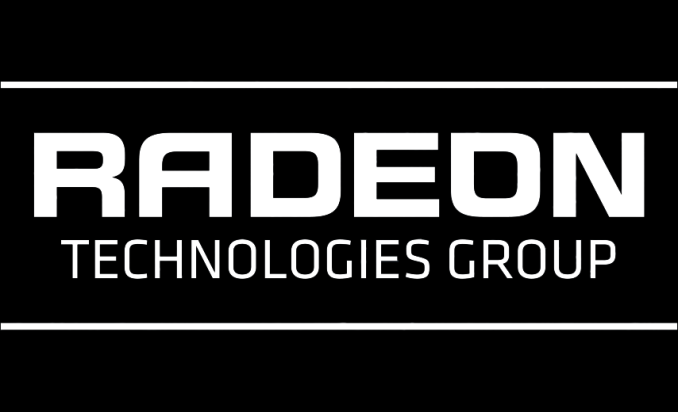

 Quote
Quote

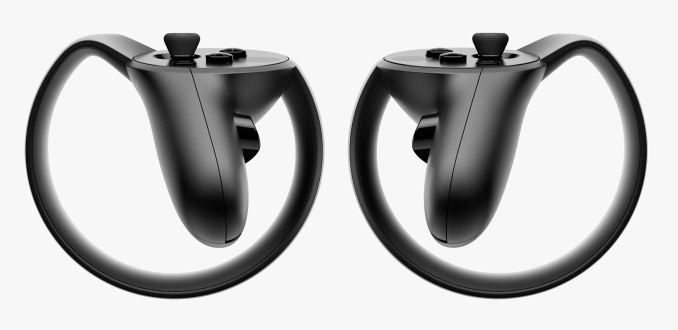
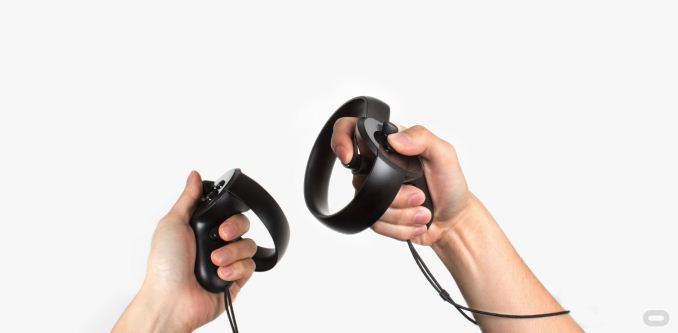
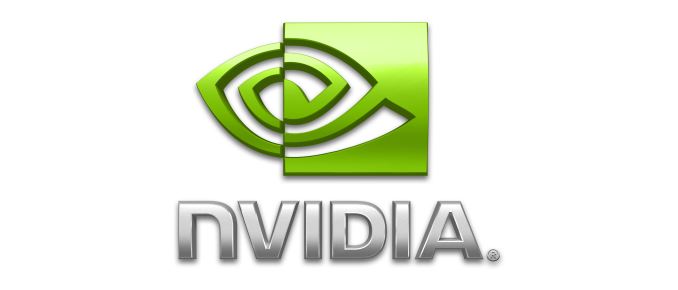






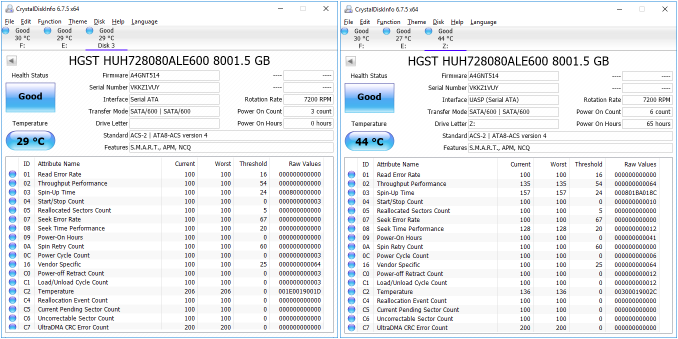
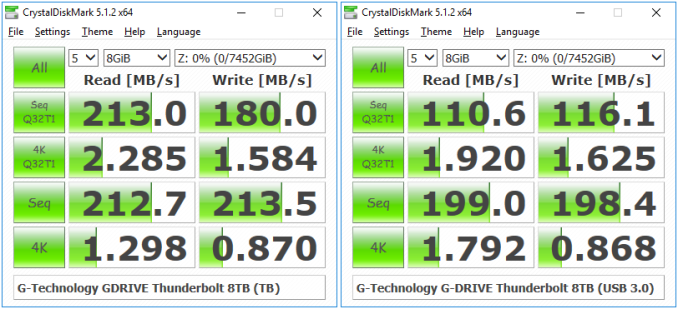
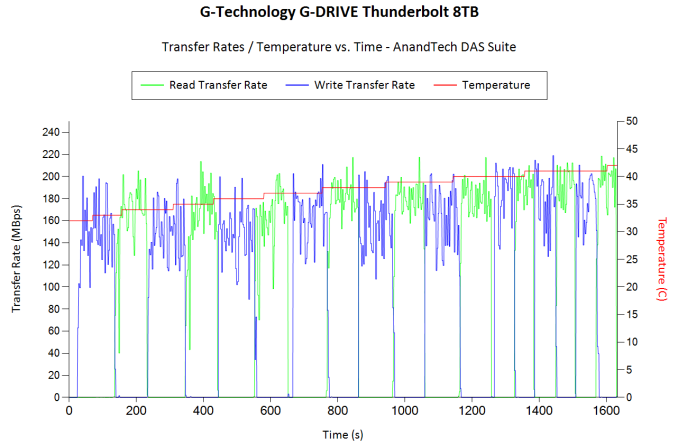
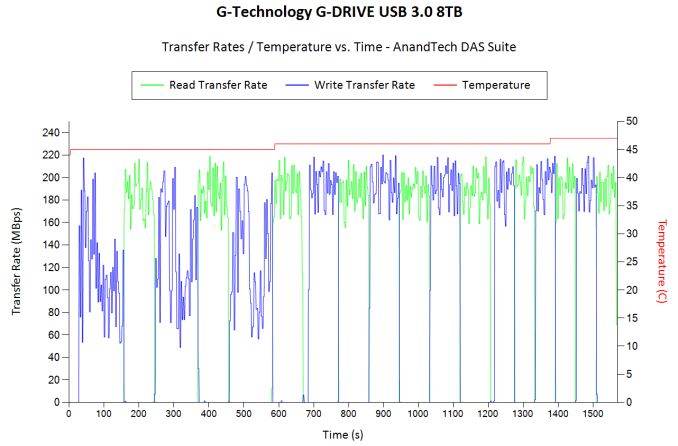
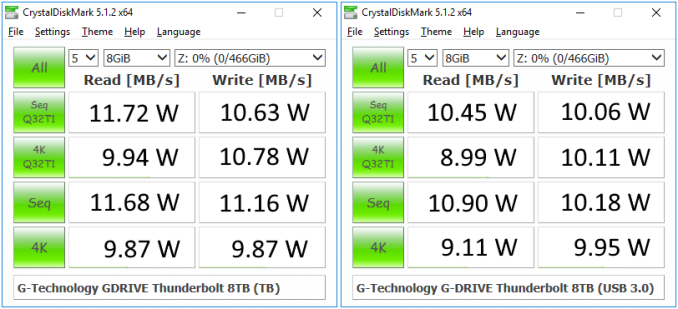

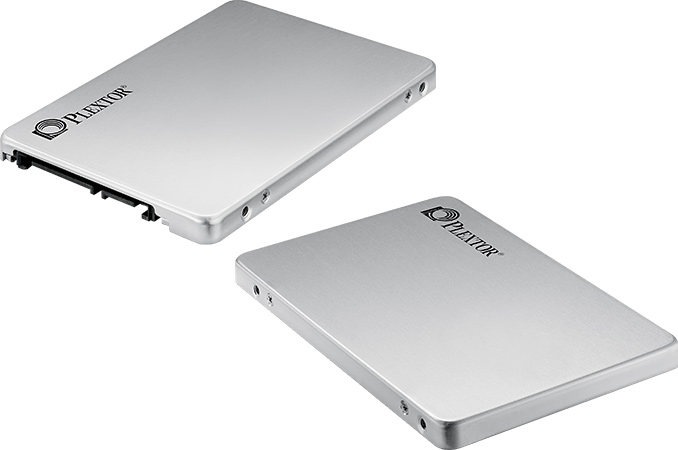
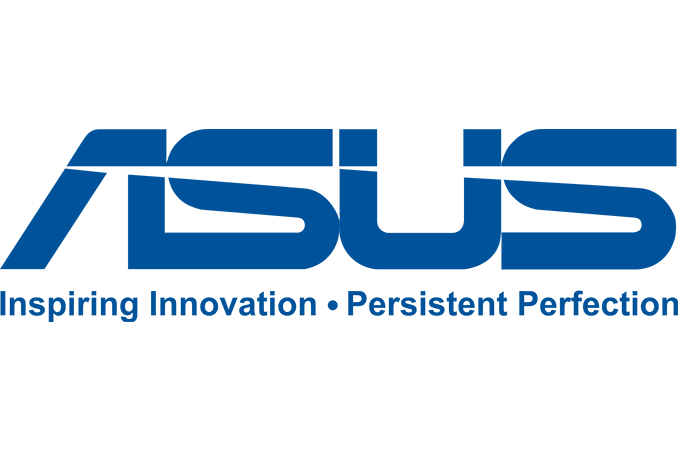



















Bookmarks